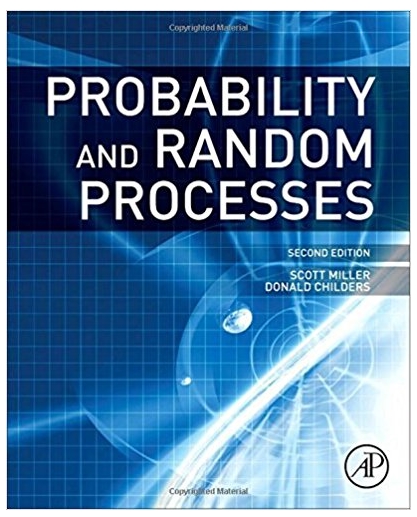Question
Need help with the following questions. Each question must contain a Reference. Answer will be denied if no Reference is available. Details: I will provide
Need help with the following questions. Each question must contain a Reference. Answer will be denied if no Reference is available.
Details:
I will provide the original question. I will then provide the Answers from three of my peers to the original question. What I need is for you to read each of the three questions from my peers and reply to each question with a thought to how the question was answered and supply a critical thinking question to keep a discussion going. (Each question will have an answer to it and a reference so there will be three answers).
Original Question: How many different tests does the textbook give you for applying the chi-square distribution? What are these tests? How could you use each of these tests at your place of business?
Peer Answer 1: The first chi-square test that the textbook illustrates is the hypothesis test of equal expected frequencies. An example of how this test could be used in my place of business in agriculture is to test different brand insecticides with the same mode of action and/or same active ingredient to show that the active ingredient has no different effect on eliminating pest from citrus trees and that the active ingredient in each brand has an equal effect as the next. The next chi-square test is the hypothesis test of unequal frequencies. This test could be run on the age of people who work in agriculture compared to people who work in other businesses because of the nature of work that agriculture requires such as labor outdoors I would believe it would be an unequal frequent compared to the people who work indoors in the AC because of the grooling toll that the heat can have on an aging body. Another test that is illustrated in the text book is testing the hypothesis that a distribution is normal. An example of when to use this test would be to conclude how often grove owners spray each year. Because of the burden of pests stimulation on the trees it is required to spray often and on a routine.
Peer Answer 2: The text gives the three following different test for applying the chi-square distribution: goodness-of-fit tests with equal expected frequencies, goodness-of fit test with unequal expected frequencies, goodness-of-fit test to investigate the reasonableness of normal distribution. For equal expected frequencies, we could survey a 100 patients to see if they would pick our hospital for the different specialties (ex: cardiac, oncology, orthopedics, general surgery) or to see if there is a specialty that is more highly sought after than the others. Similar to the example in the book, we could test our community of patients again the American Administrators Association reports for admissions. Lastly looking at the normal distribution and using my time over shift example, we could examine the mean time and standard deviation to of the data to see if it follows a normal distribution.
Peer Answer 3: The tests associated with chi-square are: a. Test of equal expected frequencies and (b) Test of unequal expected frequencies.
The classification of gender either male or female with the aim of obtaining a survey to determine their voting preference; a chi-square is used for this type of distribution because it shows a test for independence and enables us to know which gender has more votes in a particular party, say Republican and Democratic. In other words, chi-square is used as a test for independence to determine whether gender is related to voting preference.
There are four steps in using a chi-square:
1. State the hypothesis.
2. Formulate analysis plan
3.Analyze the sample data.
4.Interpret results.
-------------------------------------------------------------------------------------------------------------------------------------------------------------------------------------------------------------
The question below needs to be answered and has nothing to do with the ones above or the original question. Please provide an answer for this question with a reference.
A bakery company observes that Fridays are its busiest days in terms of selling white powder donuts and customers are increasingly ordering more donuts on Fridays. The manager of the bakery store, who has tracked the daily sales volume of these donuts for the past 6 months, wants to know how many donuts to have available on each Friday during the next months. How can this be determined? What additional data (if any) is needed? Which statistical analysis technique should be used? Can an analysis be performed? Why or why not?
Step by Step Solution
There are 3 Steps involved in it
Step: 1

Get Instant Access to Expert-Tailored Solutions
See step-by-step solutions with expert insights and AI powered tools for academic success
Step: 2

Step: 3

Ace Your Homework with AI
Get the answers you need in no time with our AI-driven, step-by-step assistance
Get Started


